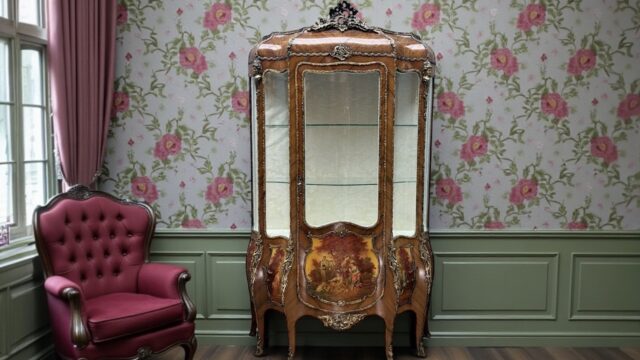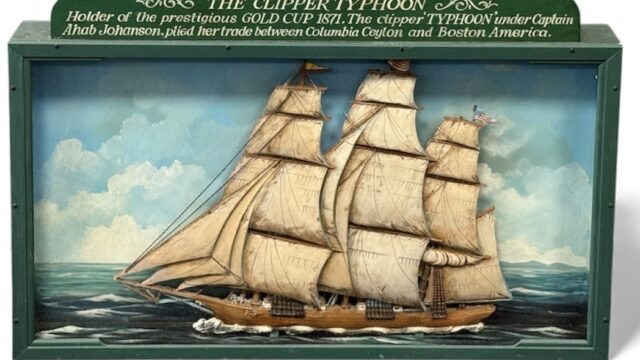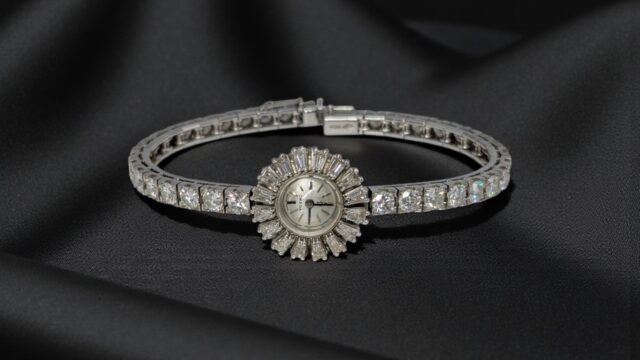F is for 56 Group Wales
Abstraction, Representation and Identity in a Changing Welsh Environment
The modern and contemporary works featured annually in this Summer's Welsh Sale on July 26th attest to the heterogeneity of the art scene in Wales. Reflecting this diversity, the current auction includes works by artists—Robert Alwyn Hughes, Mary Lloyd Jones, and Ernest Zobole among them—who, at varying stages in their careers, were members of the 56 Group Wales.
Robert Alwyn Jones giclee print 'Self Portrait, Dreaming is Free'
Lot 371 - The Summer Welsh Sale (Part II)
£150-250

Mary Lloyd Jones mixed media 'Trysorau Manod (Manod Treasures)'
Lot 121 - The Summer Welsh Sale (Part I)
£800-1,200


The Group was formed in response to the prospect with which artists working in Wales were faced in the middle of the last century. As David Bell, curator of the Glynn Vivian Art Gallery, asked rhetorically in the final chapter of his critical survey The Artist in Wales (1957): “How much opportunity […] is there in Wales to-day?” As painted by Bell, the picture looked decidedly bleak.
“In the first place,” Bell pointed out, “there is no art dealer in the wider meaning of the term in the whole of Wales.” Due to a lack of “sufficient traffic in the business and selling of pictures even in the big towns to make a dealer’s business commercially possible,” artists had to be their “own agent and undertake the business of exhibitions without the advantage of a dealer’s professional experience and without the even greater advantage of a dealer’s gallery.”
Determined to be their “own agent,” the three originators of the 56 Group—David Tinker, Eric Malthouse and Michael Edmonds—invited fellow artists active in Wales, many of whom made their living as art teachers, to join an organisation whose stated aim was to “achieve a feeling of unity that a group gives” and to “hold an annual exhibition in Wales, of a specific number of works from each member.”
As painter-sculptor David Tinker (1924–2000) put it, “the need was felt to voice a clear radical point of view, radical in the sense of forward-looking.”

The group’s name—to which “Wales” was added in 1966 to emphasise that its members were based here, whatever their place of birth—referenced the volatile year of its inception, the year of the Hungarian Revolution. Responding to the anti-Soviet uprising in one of his figure compositions, Tinker came to the conclusion that, when trying to “draw tanks and people,” he “couldn't get sufficiently expressive shapes and colours using realist techniques.”
Alive to the currents of the international artworld—and to the western art centres of Paris and New York City in particular—the Group aimed to create an environment that would enable artists in Wales to move past the “mimicry of everyday surroundings,” notwithstanding the market demand for such art.
In The Liberating Quality of Avant-Garde Art (1957), the US American art historian Meyer Shapiro argued that “what makes painting and sculpture so interesting in our times is their high degree of non-communication.” Not all of the founder members of the 56 Group would have agreed wholeheartedly. Will Roberts (1907–2000) declared that his “sympathies” were “not with abstract painting that rejects, completely, subject.” Nonetheless, he added, “all good painting has always had its measure of abstraction.”
Will Roberts oil - Village buildings with two figures in conversation
Lot 245 - The Summer Welsh Sale (Part I)
£1,000-1,500


Rather than advocating a unifying style aligned with Abstract Expressionism, the Group provided support for artist individually to explore relationships between abstraction and representation according to a felt need for an engagement with the localities and communities in which they had chosen to live and work.
Roberts left the 56 Group in 1964. He later stated that his “role” in the organisation was “not important” to him “at all,” and that, even “when abstract work became fashionable and realist painting and the like was not wanted,” he “never had any difficulty in selling [his] work in Wales.”
Nor did all artists accept the invitation to join the group. Resentful of a letter that presumed membership unless recipients voiced their objection, which they were asked do “as soon as possible,” Brenda Chamberlain (1912–1971) replied that she had “heard nothing” of the 56 Group and had never “expressed a wish” that such an organisation should be formed

Brenda Chamberlain pastel 'Krischan of Schoenau'
Lot 94 - The Summer Welsh Sale (Part I)
£400-700

Chamberlain would have been the only female founder member, and it was not until 1971 that the heretofore exclusively male group elected Mary Lloyd Jones (b. 1934), initially as an associate.
Mary Lloyd Jones mixed media 'Glyndwr's Way / Ffordd Glyndwr'
Lot 117 - The Summer Welsh Sale (Part I)
£700-1,000

By that time, eight of the twelve founder members had left the Group. An influx of new members—and, gradually, a greater representation of female artists such as Shani Rhys James (b. 1953)—helped to maintain the Group’s relevance not only in the changing artworld but also in an evolving social environment.
Shani Rhys James MBE oil 'Blue Armoire'
Lot 235 - The Summer Welsh Sale (Part I)
£17,000-22,000

Degrees of abstractions in response to place and identity vary among members of the Group, as is apparent in Waterfall, Cardigan (1959) by founder member John Wright (1931–2013) and Pont-y-Rhyl (2005) by Kevin Sinnott (b. 1947), who joined 56 Group Wales in 2009. Wright came to Wales as a Second World War evacuee from London, whereas Sinnott, who was born in South Wales, returned home after successfully pursuing his career in London and New York City.


Although it was produced over a quarter century after Ernest Zobole (1929–1999) had left the 56 Group, Painter and Subject Matter (1995/96), corresponds closely with the Group’s tenets as articulated in the invitation Zobole had accepted: that while artists “consciously seek a place to work” where they feel “at home,” they should “search for a powerful image that transcends the everyday world” to communicate “the effect of environment,” which “is deeper and more all-embracing” than can be expressed in a faithful copy of an observed subject.
Ernest Zobole oil 'Painter and Subject Matter'
Lot 252 - The Summer Welsh Sale (Part I)
£6,000-10,000

The title of Zobole’s painting—which was part of an extended project—draws attention to this “search.” According to Zobole, works like Painter and Subject Matter are “about the place where I live essentially.” In the act of painting, he reflected, “I think of myself being surrounded by it, rather than at some vantage point looking at a view of it. Representing myself in the painting probably has something to do with this.”
On the twentieth anniversary of the Group in 1976, founder member Arthur Giardelli insisted that the “purpose of art is effective communication.” At a time when major art institutions promoted conceptual art at the expense of traditional practice, the 56 Group reaffirmed the status of the professional creative as integral to modern society: “The artist can make an advertising poster, a portrait to commemorate, a symbolic image in bronze or wood for a children’s playground or a library entrance hall, a landscape reminiscent of a loved place, an illustration for a book, or a stained glass window.”
Due to their diversity, it may be difficult to see works by individuals associated with the 56 Group Wales as being part of a group or related to its long and complex history; but the range of approaches and media makes it easy to appreciate the “forward-looking” endeavour of networking artists who set out to reconcile international Modernism with the actualities of working in an environment that, in 1956, seemed remote from the centres of the western artworld.
Dr Harry Heuser
Writer and exhibition curator
The Summer Welsh Sale (Part I) will take place on Saturday 26th July at Gregynog Hall. View the online catalogue here.




